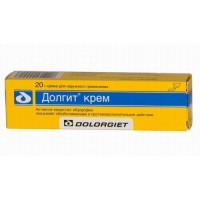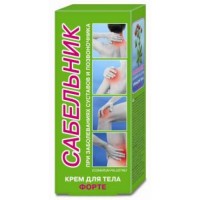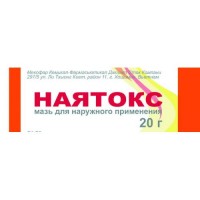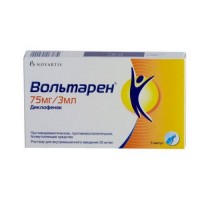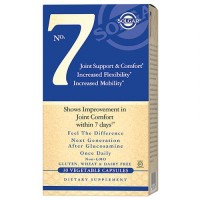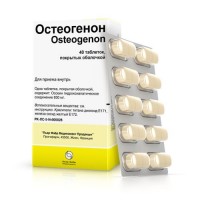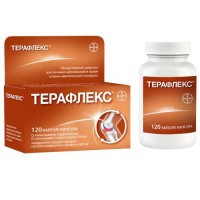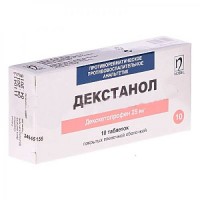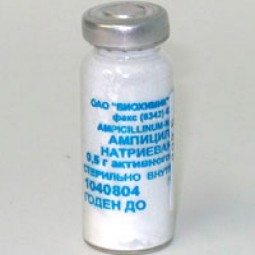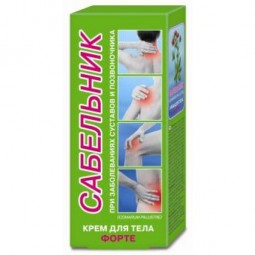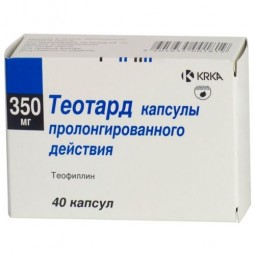ShporNet cream-balm is intended for prevention and removal of inflammatory process and also pain at calcaneal spurs.
Foot of the person – ingenious, almost perfect creation of the Nature. On the building the foot reminds an arch and therefore its small on the weight and thickness of a bone maintain huge loading. The Arkoobraznost of the arch of foot is supported from the bottom party by the most powerful sheaf - a bottom aponeurosis.
The back end of a bottom aponeurosis is attached to a calcaneus, and six lobbies disperse in the form of a fan to foot fingers. Thus, the aponeurosis connects front and back departments of foot and holds foot from a rasplastyvaniye (flat-footedness).
At stoop, excess weight, weakness of muscles of shins, especially in combination with walking, run or jumps the center of gravity of a body is displaced forward that leads to repeated microseparations of fibers of an aponeurosis from a calcaneus.
At the same time a part of the affected sinew can become covered with calcium salts. Quite so there is also a calcaneal spur seen on x-rays.
At the beginning of the century the disease met seldom and, as a rule, contacted injuries. In the Middle Ages in the east there was a torture – the person was punished blows by a stick on heels. After such executions of people a long time, sometimes several years, could not step in full on foot and went on socks.
Now the prevalence of a calcaneal spur is high: about 10% of diseases of the musculoskeletal system. People with an excess weight, diseases of a backbone and large joints of legs, flat-footedness and also athletes are predisposed ment of a calcaneal spur at long local overloads of foot.
Generally this disease women at the age of 40 years have and are more senior.
Three quarters of women are city dwellers. It is connected with wearing footwear on a high heel (over 3 cm).
The calcaneal spur is an aseptic (not microbic) inflammation in a zone of attachment of a bottom aponeurosis to a calcaneal hillock. There is owing to adjournment of salts of calcium in this area and formation of a bone outgrowth in the form of a beak or a thorn - a spur (osteophyte). The clinical picture of this pathology is rather characteristic. One main symptom - heel pain prevails. Pain at a support on foot arises generally because of emergence of new anguishes of an aponeurosis.
There is also an opinion that pain is caused by development of a bursitis or periostitis because the spur injures the fabrics surrounding it. Since the first moment as the patient gets up, he at once feels severe pain.
'A needle in a heel ', ' stepped on a nail' - such comparisons are given by sick people. Bol is so strong that it is impossible to rise on a sore foot, painfully to go and touch a sore heel.
Painful consolidation is sometimes felt. After a while in the course of walking the pain decreases a little. Walking in the presence of spurs on heels of both legs is especially painful. Sometimes such sufferers move by means of crutches.
Legs quickly get tired because the patient when walking loads edge of foot, trying to avoid heel pain. Patients become nervous, are easily irritated, their working capacity decreases.
To stop pain it is necessary to kill inflammation and to stimulate healing in the place of damage of a bottom aponeurosis.
Those natural components which are allocated with the Nature ability to stimulate healing in the place of damage of a bottom aponeurosis, so – to stop pain and to remove inflammation are a part ShporNet cream-balm.
Each vegetable component cream-balm performs the certain function according to an objective.
OIL RED PALM has antioxidant property, is saturated with beta carotene, vitamin E, polyunsaturated Omega-3 fatty acids, the Omega-6. Softens skin, reduces feeling of discomfort.
TEA TREE OIL has strong anti-inflammatory property with immunostimulating, antimicrobic and antiviral actions, is capable to get into very deep skin layers and to strengthen blood circulation at the expense of what the feeling of discomfort and pain decrease. Is a good natural antiseptic agent. And also is a conductor for all components entering ShporNet cream-balm through skin barriers in deeper layers.
The AMARANTH ancient Greeks honored an amaranth and considered it an immortality symbol. The amaranth has pronounced antioksidanty and anti-inflammatory properties. Antioxidants are neutralized by free radicals with whose action many age changes of bones, joints, vessels, skin and other fabrics are connected. The amaranth improves blood circulation, activates exchange processes and cellular metabolism.
The ROOT of the BURDOCK contains essential and fat oils, tannins, is vitamin-rich also minerals. Has anti-inflammatory effect, effectively strengthens bone and muscular fabrics, promotes removal of salts from joints. It is shown in rheumatism, gout, hypostases of the lower extremities, reduces pain.
DONNIK possesses anti-inflammatory, antimicrobic, calming, anticonvulsant, anesthetizing actions. Reduces pain in the joints which swelled up from rheumatism. It is rich with essential oils and coumarin which normalizes a hemorheology, increases elasticity of blood vessels. The meletin interfering destructive action of surplus of free radicals contains antioxidant.
COCOA BUTTER is the richest source of B1, B2, PP vitamins, provitamin A, microelements (magnesium, potassium, sodium, iron, calcium), theobromine, a feniletilamin, vegetable proteins, phytosterols, mono - and polysaccharides, bioflavonoids. Thanks to presence of polyphenols, cocoa beans have powerful antioxidant potential, help skin cells to produce biologically active agents necessary for activation of cellular metabolism, synthesis of collagen and elastin. As antioxidant, fights against age changes. Possesses anti-inflammatory and calming properties.
MUMIYo the mechanism of adaptogenny action mumiyo is connected with existence in its structure of a complex macro - and the microelements activating internal factors of protection. Mumiyo has anti-inflammatory, anti-toxic properties, improves permeability of walls of vessels. Mumiyo strengthens regeneration in various fabrics, promoting faster recovery process.
COGNAC MANNAN stimulates production of collagen, improves intercellular exchange in fabrics at the expense of what promotes faster epithelization, recovery of structure of skin.
APPLE CIDER VINEGAR great natural conductor. Promotes deeper penetration of all components through anatomic barriers of skin to the pathological center.
ShporNet cream-balm, thanks to the natural components which are its part improves blood circulation, strengthening inflow of nutrients to an aponeurosis that promotes inflammation stopping thanks to what pain recedes.
ShporNet cream-balm stimulates healing in the place of damage of a bottom aponeurosis.
Helps to restore functional activity of foot.
Route of administration: To apply ShporNet cream-balm to foot skin to the area of inflammation 2-3 times a day before full absorption. At preliminary steaming in saline solution (no more than 10 minutes) the process of restoration at calcaneal spurs accelerates. To perform procedures daily before positive take. Then it is useful to carry out some more procedures for fixing of result. Usually pains disappear through 10 - 12 procedures. If heels hurt long ago and severe pains, then we recommend to apply ShporNet cream-balm 3-4 times during the day.
After the evening procedure it is desirable to put on cotton socks.
It is good to combine these actions with orthopedic insoles or subcalcaneal tabs from soft materials.
Foot of the person – ingenious, almost perfect creation of the Nature. On the building the foot reminds an arch and therefore its small on the weight and thickness of a bone maintain huge loading. The Arkoobraznost of the arch of foot is supported from the bottom party by the most powerful sheaf - a bottom aponeurosis.
The back end of a bottom aponeurosis is attached to a calcaneus, and six lobbies disperse in the form of a fan to foot fingers. Thus, the aponeurosis connects front and back departments of foot and holds foot from a rasplastyvaniye (flat-footedness).
At stoop, excess weight, weakness of muscles of shins, especially in combination with walking, run or jumps the center of gravity of a body is displaced forward that leads to repeated microseparations of fibers of an aponeurosis from a calcaneus.
At the same time a part of the affected sinew can become covered with calcium salts. Quite so there is also a calcaneal spur seen on x-rays.
At the beginning of the century the disease met seldom and, as a rule, contacted injuries. In the Middle Ages in the east there was a torture – the person was punished blows by a stick on heels. After such executions of people a long time, sometimes several years, could not step in full on foot and went on socks.
Now the prevalence of a calcaneal spur is high: about 10% of diseases of the musculoskeletal system. People with an excess weight, diseases of a backbone and large joints of legs, flat-footedness and also athletes are predisposed ment of a calcaneal spur at long local overloads of foot.
Generally this disease women at the age of 40 years have and are more senior.
Three quarters of women are city dwellers. It is connected with wearing footwear on a high heel (over 3 cm).
The calcaneal spur is an aseptic (not microbic) inflammation in a zone of attachment of a bottom aponeurosis to a calcaneal hillock. There is owing to adjournment of salts of calcium in this area and formation of a bone outgrowth in the form of a beak or a thorn - a spur (osteophyte). The clinical picture of this pathology is rather characteristic. One main symptom - heel pain prevails. Pain at a support on foot arises generally because of emergence of new anguishes of an aponeurosis.
There is also an opinion that pain is caused by development of a bursitis or periostitis because the spur injures the fabrics surrounding it. Since the first moment as the patient gets up, he at once feels severe pain.
'A needle in a heel ', ' stepped on a nail' - such comparisons are given by sick people. Bol is so strong that it is impossible to rise on a sore foot, painfully to go and touch a sore heel.
Painful consolidation is sometimes felt. After a while in the course of walking the pain decreases a little. Walking in the presence of spurs on heels of both legs is especially painful. Sometimes such sufferers move by means of crutches.
Legs quickly get tired because the patient when walking loads edge of foot, trying to avoid heel pain. Patients become nervous, are easily irritated, their working capacity decreases.
To stop pain it is necessary to kill inflammation and to stimulate healing in the place of damage of a bottom aponeurosis.
Those natural components which are allocated with the Nature ability to stimulate healing in the place of damage of a bottom aponeurosis, so – to stop pain and to remove inflammation are a part ShporNet cream-balm.
Each vegetable component cream-balm performs the certain function according to an objective.
OIL RED PALM has antioxidant property, is saturated with beta carotene, vitamin E, polyunsaturated Omega-3 fatty acids, the Omega-6. Softens skin, reduces feeling of discomfort.
TEA TREE OIL has strong anti-inflammatory property with immunostimulating, antimicrobic and antiviral actions, is capable to get into very deep skin layers and to strengthen blood circulation at the expense of what the feeling of discomfort and pain decrease. Is a good natural antiseptic agent. And also is a conductor for all components entering ShporNet cream-balm through skin barriers in deeper layers.
The AMARANTH ancient Greeks honored an amaranth and considered it an immortality symbol. The amaranth has pronounced antioksidanty and anti-inflammatory properties. Antioxidants are neutralized by free radicals with whose action many age changes of bones, joints, vessels, skin and other fabrics are connected. The amaranth improves blood circulation, activates exchange processes and cellular metabolism.
The ROOT of the BURDOCK contains essential and fat oils, tannins, is vitamin-rich also minerals. Has anti-inflammatory effect, effectively strengthens bone and muscular fabrics, promotes removal of salts from joints. It is shown in rheumatism, gout, hypostases of the lower extremities, reduces pain.
DONNIK possesses anti-inflammatory, antimicrobic, calming, anticonvulsant, anesthetizing actions. Reduces pain in the joints which swelled up from rheumatism. It is rich with essential oils and coumarin which normalizes a hemorheology, increases elasticity of blood vessels. The meletin interfering destructive action of surplus of free radicals contains antioxidant.
COCOA BUTTER is the richest source of B1, B2, PP vitamins, provitamin A, microelements (magnesium, potassium, sodium, iron, calcium), theobromine, a feniletilamin, vegetable proteins, phytosterols, mono - and polysaccharides, bioflavonoids. Thanks to presence of polyphenols, cocoa beans have powerful antioxidant potential, help skin cells to produce biologically active agents necessary for activation of cellular metabolism, synthesis of collagen and elastin. As antioxidant, fights against age changes. Possesses anti-inflammatory and calming properties.
MUMIYo the mechanism of adaptogenny action mumiyo is connected with existence in its structure of a complex macro - and the microelements activating internal factors of protection. Mumiyo has anti-inflammatory, anti-toxic properties, improves permeability of walls of vessels. Mumiyo strengthens regeneration in various fabrics, promoting faster recovery process.
COGNAC MANNAN stimulates production of collagen, improves intercellular exchange in fabrics at the expense of what promotes faster epithelization, recovery of structure of skin.
APPLE CIDER VINEGAR great natural conductor. Promotes deeper penetration of all components through anatomic barriers of skin to the pathological center.
ShporNet cream-balm, thanks to the natural components which are its part improves blood circulation, strengthening inflow of nutrients to an aponeurosis that promotes inflammation stopping thanks to what pain recedes.
ShporNet cream-balm stimulates healing in the place of damage of a bottom aponeurosis.
Helps to restore functional activity of foot.
Route of administration: To apply ShporNet cream-balm to foot skin to the area of inflammation 2-3 times a day before full absorption. At preliminary steaming in saline solution (no more than 10 minutes) the process of restoration at calcaneal spurs accelerates. To perform procedures daily before positive take. Then it is useful to carry out some more procedures for fixing of result. Usually pains disappear through 10 - 12 procedures. If heels hurt long ago and severe pains, then we recommend to apply ShporNet cream-balm 3-4 times during the day.
After the evening procedure it is desirable to put on cotton socks.
It is good to combine these actions with orthopedic insoles or subcalcaneal tabs from soft materials.

